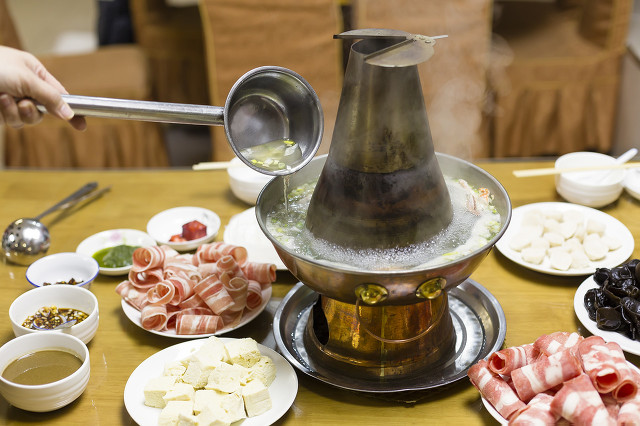
Shuan Yang Rou [Photo via tuchong.com]
Tall copper pots with funnels have become a Beijing icon.
The steam rises, warming faces and hands. The table is piled high with raw slices of meat and platters of vegetables. Every diner is cradling a bowl of sauce in front of you, ready to dip the freshly cooked ingredients. Bite-sized pieces of meat and vegetables are cooked at the table in a simmering pot of stock.
Most food historians agree that the hotpot came in with the Mongolians during the Yuan Dynasty (1271-1368). Apparently, the soldiers traveled light, so they boiled water in their helmets and cooked pieces of meat in them.
But it was Muslim chefs who had settled in the Forbidden City who refined it into an art, with lamb and beef and Silk Road spices such as chili, fennel and cumin, and fermented wild chive flowers from the northern grasslands.
They also introduced the tall copper pots with funnels that have become a Beijing icon.
These early chefs set the template for the hotpots so popular north of the Yangtze River, with their preference for gamey lamb, strong sauces and winter cabbage.

